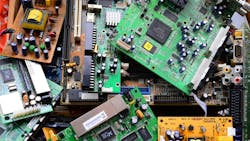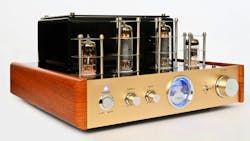The Maker Movement: Then and Now
What you’ll learn:
- What came before the Maker Movement?
- What drives the makers?
- Where does open-source hardware and software fit?
The Maker Movement consists of a diverse group of people, organizations, and companies that make learning about technology fun and possibly profitable. The do-it-yourself (DIY) mentality actually goes back much farther when it comes to electronics and tinkerers have been around forever.
Numerous things have changed over time to make the impact of the movement more widespread and diverse. Prototype board ecosystems like Arduino, Raspberry Pi, and BeagleBoard provide a hardware and software environment, while 3D printers simplify precise creation of physical devices. Open-source software like GNU gcc compiler and Linux have transformed not only the DIY space, but commercial and industrial markets as well.
Turning ideas into prototypes and then into products has been facilitated by websites like Kickstarter, which streamline the process of accessing capital and selling products.
Before There Were Makers
Ham radio operators were once at the forefront of electronics with vacuum-tube amplifiers. Companies like Heathkit sold kit versions that allowed makers to put together electronic devices from scratch. It was possible to run down to a local Radio Shack and pick up wires, solder, tubes, and diodes for projects. However, in most cases, the background and support when it came to electronics and software was a bit more difficult to come by.
Vacuum tubes led to transistors and, in turn, small integrated circuits (Fig. 1). Building something from scratch entailed soldering and oftentimes metal work. The idea of incorporating software into projects arrived much later.
It’s possible to trace the Maker Movement back to early ham radio events and computer events like the Trenton Computer Festival (TCF), which are still running today. I gave a presentation on Creating Bug-Free Embedded Software a while back at TCF. The audience was a mix of students, adults, engineers, and programmers with various backgrounds.
The PC revolution tended to dominate the “maker space” in the 70s, 80s, and into the 90s, although it was more the PC space at that point with hobbyists and emerging companies early on. One had to be rather dedicated to experiment in this space, as the plethora of boards and software we now have wasn’t nearly as robust. Computer clubs were distributing software on floppy disks and bulletin board systems (BBS) using dial-up modems that predated the internet.
Magazines like Mini Micro Systems, Microsystems Journal, Dr. Dobbs Journal, and Byte Magazine were sources of hardware and software information. There were plenty of electronics publications such as Electronic Design, though they catered to, and were more generally available to, professional engineers and programmers. Publications like PC Magazine and Computer Shopper targeted end-users. I was the first PC Labs Director at PC Magazine and also wrote for all of those publications at some point.
Maker Formalization
The maker movement we know today emerged after the internet was in full swing, along with the open-source movement. Linux and open-source software like the gcc and Eclipse IDE changed both the commercial and non-commercial development environment. It also changed how OEMs viewed the market—the tools and often the development platforms were no longer a focus of income, but rather a way to sell the hardware and software products built using these tools.
The National Computer Conference (NCC), Comdex, and Consumer Electronics Show (CES) catered to professionals. CES is still around and numerous, more focused shows are available these days for that crowd. In 2006, the Maker Faire arose along with Make magazine.
The rise of Makerspaces emerged, too. These locations essentially rent space, often as a subscription service, and access to tools that the typical user would not be able to afford. It once included things such as 3D printers when they were expensive, but plenty of higher-end systems would be found in one of these shops now. Even lower-end printers are useful in this type of environment, as the people taking advantage of the hardware, software, and services range from novices to experts.
Changing Technology Made for Makers
The growth of hardware platforms like Arduino, BeagleBone Arduino, and NVIDIA’s Jetson (Fig. 2) has led to the matching growth of commercial development kits based on these form factors. Any new sensor, microcontroller, or microprocessor is likely to show up with a development or evaluation kit that aligns with one of these form factors.
Matching software support is also part of the ecology. It includes IDEs, run times, operating systems, and more. For me, this is actually more important than the hardware side because it includes instructional material, and makers are all about learning.
The next piece to the puzzle is the associated websites. The internet and general access to information makes the old BBS and floppy disks pale in comparison. A typical download of a gigabyte of information or tools would have been impossible until recently.
The sites have turned into commercial stores thanks to the increasing number and quality of products. The demand for turning prototypes into products has spawned versions such as the Raspberry Pi Compute Module.
The final piece of the puzzle involves 3D printers (Fig. 3). One of the biggest challenges facing makers when building a project that someone else designed is acquiring the parts. The hardware platforms just mentioned are only part of the mix. Getting arms for robots, or little parts, or even boxes for holding a project, were difficult to get or build prior to 3D printers.
These days, 3D printers are readily available, and design files are easily exchanged and enhanced. A project that has a case containing a Raspberry Pi can be adjusted to fit an additional expansion board or to accommodate a new sensor.
Makers and STEM Competitions
I wanted to make mention of STEM competitions like the Regeneron International Science and Engineering Fair (ISEF). I’ve written about these competitions numerous times, and I’m still involved with the Mercer Science and Engineering Fair (MSEF). The competitions tend to include the cream of the crop of makers.
Adam Savage of MythBusters fame noted, “Humans do two things that make us unique from all other animals—we use tools and we tell stories. And when you make something, you’re doing both at once.”
That’s sort of what makers are all about. Telling the stories is often about teaching others as well.
One of My Maker Contributions
I’ve been lucky enough to have played with and built things starting with vacuum tubes through to machine-learning (ML) and artificial-intelligence (AI) projects using NVIDIA’s Jetson platforms.
I picked up the Makeblock Mbot for my grandson to teach him how to program (Fig. 4). My daughter competed at ISEF using a similar robot, but she learned Basic, Prolog ,and Java along with basic electronics to get her robots to work.
The maker project I did to enhance the Mbot was built around Pololu three-channel FOV (field of view) time-of-flight (ToF) distance sensor based on Texas Instruments’ OPT3101 ToF-based long-range proximity and distance-sensor analog front end (AFE). The module adds LEDs and interface support to the OPT3101. I added an adapter and driver software for the graphical Mblock programming software used with the Mbot. Mblock is based on MIT’s Scratch.
Scratch is another example of how tools and hardware are being tailored for a wider variety of people, and it makes the introduction of different technologies easier. This is especially true for AI/ML, which can be very complex, Still, that can also be easily utilized with the right framework.
Here’s hoping that you try out your own maker project if you haven’t done so already.
About the Author
William G. Wong
Senior Content Director - Electronic Design and Microwaves & RF
I am Editor of Electronic Design focusing on embedded, software, and systems. As Senior Content Director, I also manage Microwaves & RF and I work with a great team of editors to provide engineers, programmers, developers and technical managers with interesting and useful articles and videos on a regular basis. Check out our free newsletters to see the latest content.
You can send press releases for new products for possible coverage on the website. I am also interested in receiving contributed articles for publishing on our website. Use our template and send to me along with a signed release form.
Check out my blog, AltEmbedded on Electronic Design, as well as his latest articles on this site that are listed below.
You can visit my social media via these links:
- AltEmbedded on Electronic Design
- Bill Wong on Facebook
- @AltEmbedded on Twitter
- Bill Wong on LinkedIn
I earned a Bachelor of Electrical Engineering at the Georgia Institute of Technology and a Masters in Computer Science from Rutgers University. I still do a bit of programming using everything from C and C++ to Rust and Ada/SPARK. I do a bit of PHP programming for Drupal websites. I have posted a few Drupal modules.
I still get a hand on software and electronic hardware. Some of this can be found on our Kit Close-Up video series. You can also see me on many of our TechXchange Talk videos. I am interested in a range of projects from robotics to artificial intelligence.





